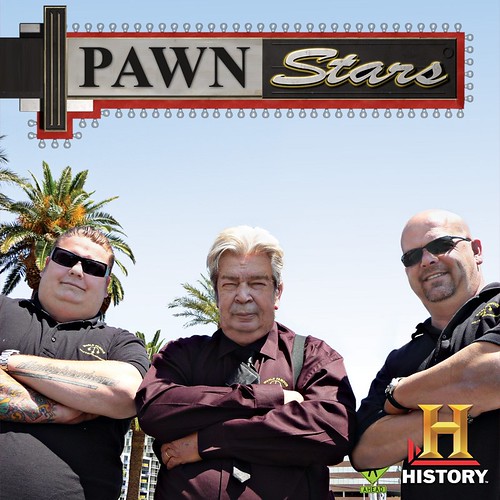Bull Pawns Matador (Warning: Very Graphic & NFSW)
- Thread starter Rapst
- Start date
even this video has been reposted but i dont think ive commented on it
bullfighting is hella mainey i dont think ppl realize how violent it is.
they dont fight a full strength bull cause it would destroy them, they throw javelins at it and cut it all over the place until its exhausted and dieing, THEN fight it. its a long drawn out very bloody process, and they finally execute it. i dont think a lot of people could get down wtih watching an authentic bullfight. bullfighters are highly respected
bullfighting is hella mainey i dont think ppl realize how violent it is.
they dont fight a full strength bull cause it would destroy them, they throw javelins at it and cut it all over the place until its exhausted and dieing, THEN fight it. its a long drawn out very bloody process, and they finally execute it. i dont think a lot of people could get down wtih watching an authentic bullfight. bullfighters are highly respected
Spanish-style bullfighting is called corrida de toros (literally "race of bulls") or la fiesta ("the festival"). In a traditional corrida, three matadores ("killers"), each fight two bulls, each of which is between four and six years old and weighs no less than 460 kg.[11] Each matador has six assistants — two picadores ("lancers") mounted on horseback, three banderilleros ("flagmen") - who along with the matadors are collectively known as toreros ("bullfighters") - and a mozo de espada ("sword page"). Collectively they comprise a cuadrilla ("entourage").
The modern corrida is highly ritualized, with three distinct stages or tercios ("thirds"), the start of each being announced by a trumpet sound. The participants first enter the arena in a parade, called the paseíllo, to salute the presiding dignitary, accompanied by band music. Torero costumes are inspired by 18th century Andalusian clothing, and matadores are easily distinguished by the gold of their traje de luces ("suit of lights") as opposed to the lesser banderilleros who are also called toreros de plata ("bullfighters of silver").


Corrida in Sevilla, Spain
Next, the bull enters the ring to be tested for ferocity by the matador and banderilleros with the magenta and gold capote ("dress cape"). This is the first stage, the tercio de varas ("the lancing third"), and the matador first confronts the bull with the capote, observing the behaviour of the bull while performing a tanda ("series of passes") to impress the crowd.
Next, a picador enters the arena on horseback armed with a vara ("lance"). To protect the horse from the bull's horns, the horse is surrounded by a peto — a protective mattress-like covering. Prior to 1930, the horse did not wear any protection, and the bull would usually disembowel the horse during this stage. Until this change was instituted, the number of horses killed during a fight was higher than the number of bulls killed.[12]
At this point, the picador stabs just behind the morillo, a mound of muscle on the fighting bull's neck, weakening the neck muscles and leading to the animal's first loss of blood. The manner in which the bull charges the horse provides important clues to the matador about which side the bull favors. If the picador is successful, the bull will hold its head and horns lower during the following stages of the fight. This makes the bull's charges less dangerous and more reliable, enabling the matador to perform.
In the next stage, the tercio de banderillas ("the third of flags"), the three banderilleros each attempt to plant two banderillas, sharp barbed sticks into the bull's shoulders. These anger and invigorate the bull who has been tired by his attacks on the horse and the damage he has taken from the lance. Sometimes a matador will place his own banderillas.
In the final stage, the tercio de muerte ("the third of death"), the matador re-enters the ring alone with a small red cape, or muleta, and a sword. It is a common misconception that the color red is supposed to anger the bull, because bulls, in fact, are colorblind.[13][14] The cape is thought to be red to mask the bull's blood, although this is now also a matter of tradition.[15] The matador uses his cape to attract the bull in a series of passes which serve the dual purpose of wearing the animal down for kill and producing a beautiful display or faena. He may also demonstrate his domination over the bull by caping it especially close to his body. The faena is the entire performance with the muleta and it is usually broken down into tandas, "series", of passes. The faena ends with a final series of passes in which the matador with a muleta attempts to maneuver the bull into a position to stab it between the shoulder blades and through the aorta or heart. The act of thrusting the sword is called an estocada.
If the matador has performed particularly well, the crowd may petition the president to award the matador an ear of the bull by waving white handkerchiefs. If his performance was exceptional, he will award two, and in certain more rural rings a tail can still be awarded. Very rarely, if the public or the matador believe that the bull has fought bravely, they may petition the president of the plaza to grant the bull an indulto before the tercio de muerte. This is when the bull’s life is spared and allowed to leave the ring alive and return to the ranch where it came from. Then the bull becomes a stud bull for the rest of his life.
The modern corrida is highly ritualized, with three distinct stages or tercios ("thirds"), the start of each being announced by a trumpet sound. The participants first enter the arena in a parade, called the paseíllo, to salute the presiding dignitary, accompanied by band music. Torero costumes are inspired by 18th century Andalusian clothing, and matadores are easily distinguished by the gold of their traje de luces ("suit of lights") as opposed to the lesser banderilleros who are also called toreros de plata ("bullfighters of silver").


Corrida in Sevilla, Spain
Next, the bull enters the ring to be tested for ferocity by the matador and banderilleros with the magenta and gold capote ("dress cape"). This is the first stage, the tercio de varas ("the lancing third"), and the matador first confronts the bull with the capote, observing the behaviour of the bull while performing a tanda ("series of passes") to impress the crowd.
Next, a picador enters the arena on horseback armed with a vara ("lance"). To protect the horse from the bull's horns, the horse is surrounded by a peto — a protective mattress-like covering. Prior to 1930, the horse did not wear any protection, and the bull would usually disembowel the horse during this stage. Until this change was instituted, the number of horses killed during a fight was higher than the number of bulls killed.[12]
At this point, the picador stabs just behind the morillo, a mound of muscle on the fighting bull's neck, weakening the neck muscles and leading to the animal's first loss of blood. The manner in which the bull charges the horse provides important clues to the matador about which side the bull favors. If the picador is successful, the bull will hold its head and horns lower during the following stages of the fight. This makes the bull's charges less dangerous and more reliable, enabling the matador to perform.
In the next stage, the tercio de banderillas ("the third of flags"), the three banderilleros each attempt to plant two banderillas, sharp barbed sticks into the bull's shoulders. These anger and invigorate the bull who has been tired by his attacks on the horse and the damage he has taken from the lance. Sometimes a matador will place his own banderillas.
In the final stage, the tercio de muerte ("the third of death"), the matador re-enters the ring alone with a small red cape, or muleta, and a sword. It is a common misconception that the color red is supposed to anger the bull, because bulls, in fact, are colorblind.[13][14] The cape is thought to be red to mask the bull's blood, although this is now also a matter of tradition.[15] The matador uses his cape to attract the bull in a series of passes which serve the dual purpose of wearing the animal down for kill and producing a beautiful display or faena. He may also demonstrate his domination over the bull by caping it especially close to his body. The faena is the entire performance with the muleta and it is usually broken down into tandas, "series", of passes. The faena ends with a final series of passes in which the matador with a muleta attempts to maneuver the bull into a position to stab it between the shoulder blades and through the aorta or heart. The act of thrusting the sword is called an estocada.
If the matador has performed particularly well, the crowd may petition the president to award the matador an ear of the bull by waving white handkerchiefs. If his performance was exceptional, he will award two, and in certain more rural rings a tail can still be awarded. Very rarely, if the public or the matador believe that the bull has fought bravely, they may petition the president of the plaza to grant the bull an indulto before the tercio de muerte. This is when the bull’s life is spared and allowed to leave the ring alive and return to the ranch where it came from. Then the bull becomes a stud bull for the rest of his life.
1. ceremonies
2. mess around wtih bull a little, pump up the crowd
3. someone else fucks up the bull, basically severes the bulls neck so it cant rip upwards with its horns and kill the fighter as easily (prolly saved this dudes life)
4. stab it in shoulder blades with spears that stay there
5. charging the red flag thing, eventually stabs through the bulls neck and through its heart with a sword and kills it
brought to you by wikipedia and middle school spanish class, ~0.5 gram trainwreck and boredom at work





